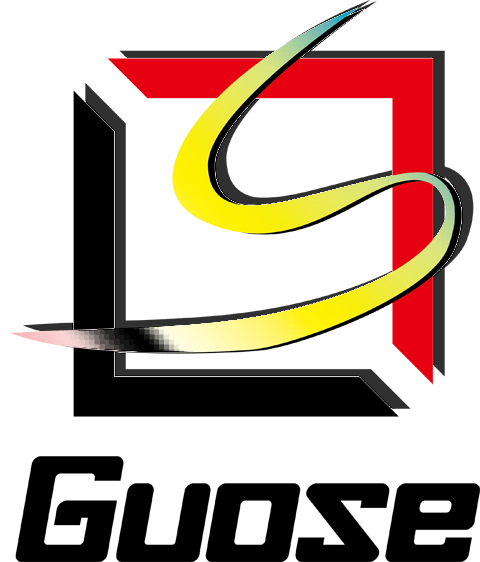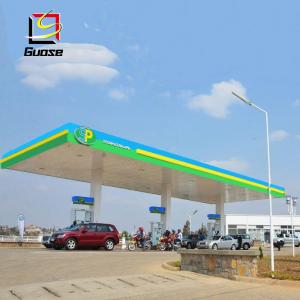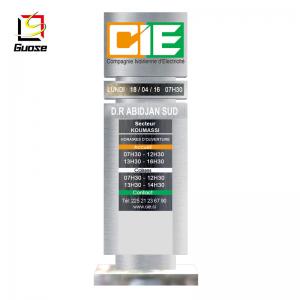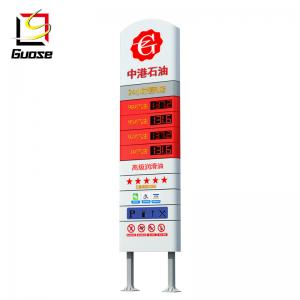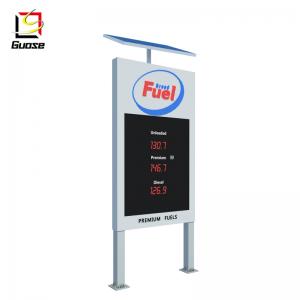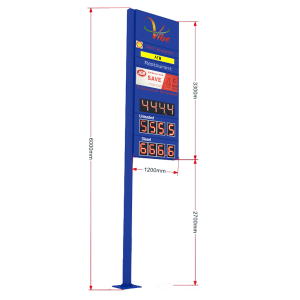Gas station safety knowledge
1. What are the small fire extinguishers commonly used at gas stations:
Chemical foam fire extinguisher, clean water foam fire extinguisher, carbon dioxide fire extinguisher, dry powder fire extinguisher, 1211 fire extinguisher, asbestos, sand
Scope of application:
Dry powder fire extinguishers are suitable for the initial fires of flammable liquids, combustible gases, combustible solids and live equipment;
Foam fire extinguishers are suitable for the initial fires that extinguish oily, petroleum products and general solid materials;
Carbon dioxide fire extinguishers are suitable for fighting electrical fires and other valuable equipment, documents, files and other fires.
Instructions:
(1) Portable: first turn the fire extinguisher upside down several times to loosen the dry powder in the bucket, unplug the safety pin, hold the nozzle with one hand, press the handle with the other hand, and spray the nozzle to the left and right of the flame. The initial fire can be extinguished.
(2) Cart type: generally operated by two people. When using, the fire extinguisher will be quickly connected or pushed to the fire site, stop at 10 meters from the fire point, one person will stabilize the fire extinguisher, then pull out the insurance pin and quickly deploy the spray. Hose, hold the spray gun, aim at the root of the flame, and press the other person to press the dust.
(3) Carbon dioxide fire extinguisher: The nozzle should be directly directed to the flame spray to quickly evaporate the carbon dioxide gas and extinguish the fire. When extinguishing the fire, do not touch the spray tube with your hand to prevent frostbite.
2. Static electricity is a common physical phenomenon in which objects are charged with static charges. The contact and separation of two different substances can generate static electricity. Oil flow, agitation, filtration, impact, personnel activities, and wearing and undressing may generate static electricity. When static electricity accumulates to a certain extent, fire and discharge may occur. If a proper concentration of combustible gas is present in the discharge space, it may cause Combustion and explosion of combustible gases.
3, gas station static electricity sources: First, the static electricity generated during the storage, transportation and processing of oil; second, the static electricity generated by people walking, wearing clothes and other activities; third is the static electricity generated by the friction of other objects.
4. Anti-static measures at gas stations:
(1) Oilers must wear anti-static overalls when working.
(2) When refueling, the oil gun conductive device must be in good condition, and the static guiding device should be inspected regularly.
(3) When connecting and unloading oil, the conductive grounding clamp must be connected to the metal part of the tanker.
5, "three no fire" regulations: no approval of the fire ticket does not move fire; guardian is not in the field does not move fire; protective measures do not implement the fire
6. Ten safety bans at gas stations:
(1) Fireworks are strictly prohibited, and it is strictly forbidden to stack flammable materials.
(2) It is strictly forbidden for workers to wear shoes with nails and garments that are prone to static electricity.
(3) It is strictly forbidden to use gasoline to scrub clothes and utensils. It is strictly forbidden to use chemical fiber mops and rags.
(4) It is strictly forbidden to refuel the vehicles that have not been extinguished. It is strictly forbidden to hit the exhaust pipe of the vehicle with a refueling gun.
(5) It is strictly forbidden to repair the car in the station.
(6) It is strictly forbidden to directly fill gasoline into plastic drums.
(7) It is strictly forbidden to use communication tools at the fueling site and tank area.
(8) It is strictly forbidden to carry out refueling and unloading operations during strong lightning.
(9) It is strictly forbidden to carry out construction work at the gas station without the hot fire procedure.
(10) It is strictly forbidden to move fire equipment at will.
7. Several emergency treatment plans for fires at gas stations:
(1) The tank mouth is on fire. Cover with asbestos cloth, use a dry powder fire extinguisher to save, and strive to control the fire as soon as possible and control the fire risk in the initial state.
(2) The oil pump is on fire. First turn off the pump to stop refueling. The insider hears the alarm and cuts off the power supply in time. The asbestos and fire extinguisher can be used to save the fire.
(3) The refueling vehicle caught fire. Use dry powder to save and fire the vehicle out of the station to a safe place as soon as possible. When the flame is in the torch at the mouth of the fuel tank, wet clothes and asbestos yarn can be used to securely lock the fuel tank mouth to suffocate the flame.
(4) The electrical appliance is in a fire. Pull off the power, and use a dry powder fire extinguisher to save, forbidden to use water, so as not to get an electric shock, notify the electrician to repair in time.
8. “Three violations”: illegal operation, illegal command, violation of labor discipline
9, the goal of QHSE management: no accidents, no pollution, no occupational hazards
10, China's fire protection policy: prevention-based, anti-cancellation
11, four do not let go of the principle: the cause of the accident is not checked and not let go; the responsible person has not been treated and not let go; employees have not been educated and not let go; preventive measures are not implemented.
12. Fire: The phenomenon of continuous gas that occurs when the combustibles are exposed to fire in the air.
13. Spontaneous combustion: The flammable substance has no external fire source in the air, and it is caused by self-heating or external heat.
14. Explosion: Any phenomenon that occurs in an instant of combustion while generating a large amount of heat and gas and diffusing around with great pressure is called an explosion.
15. What operations are strictly prohibited during thunderstorms: It is strictly forbidden to perform oil and gas discharge operations such as unloading oil, tank cleaning, oil tank ventilation and exhausting, and opening oil measurement sampling. When high-strength lightning, lightning strikes and lightning strikes are frequent, the fuel should be stopped.
16. Key fire protection parts of gas stations: oil tank area, fueling site, power distribution room, business hall, etc.
17. What are the requirements for the gas station staff in dressing:
(1) Wear anti-static clothing, no anti-static clothing, no chemical fiber clothing
(2) Do not wear nail shoes
18, the basic method of fire extinguishing: cooling method, isolation method, suffocation method, inhibition method
19. What is the safety “four understandings”?
(1) understand the danger of fire; (2) understand the measures to prevent fire; (3) understand the method of fighting the initial fire; (4) understand the evacuation of personnel.
20, "four meetings": (1) will alarm; (2) will use fire equipment; (3) will save the initial fire; (4) will escape
21, how to save a small fire: After the fire is found, the power should be cut off immediately. If the fire area is small and the fire is not large, use a small dry powder fire extinguisher or a dry powder cart to extinguish the fire. If the area is large, the fire is difficult to control, and the alarm should be decisive.
22. How to report the fire: If there is a fire at the gas station, please dial the fire alarm “119” in time. The following contents should be clearly stated when the alarm occurs: (1) the name of the fire unit and the detailed address; (2) the fire location, the fire substance, the fire Size; (3) the name of the alarm person, the alarm phone number; (4) to the fire station at the entrance of the gas station.
23, fire arrester: flame arrester, also known as fire extinguisher, is a fire safety device, is an important part of the tank breathing system. It is mainly composed of two parts: a casing and a fire-resistant core.
24. Explosion concentration limit: When the steam of the fuel oil and the fuel oil is mixed with the air and reaches a certain concentration, it will explode when it encounters the fire source. The concentration range at which the fire source can explode is called the explosion concentration limit.
25. The gas station is responsible for the daily inspection of oil tanks and pipelines:
(1) The anti-corrosion condition of the tank of the ground oil tank, whether the paint is peeling off; whether there is crack, depression or inclination at the bottom of the tank.
(2) The flexible state of the front door switch of the tank, whether the valve is adjusted to not leak or leak.
(3) Whether the liquid level gauge, flame arrester, snorkel, inlet and outlet oil tank, drain port, manhole and other related components are good.
(4) Whether the metal software leaks or deforms.
(5) Whether the pipeline or pipe fittings are leaking.
(6) Check the ground and overhead lines, especially the paint discolored parts.
(7) The pipeline support and the pipeline itself have abnormal vibration or deformation.
(8) Whether the indication values of various instruments and meters are normal.
26. The four letters in QHSE management represent: quality, health, safety, and environment.
27. The basic methods of QHSE management system are: hazard identification, risk assessment, risk control, continuous improvement
28. Types and grades of accidents: Accidents are classified into fire accidents, traffic accidents, production accidents, equipment accidents and casualties; according to relevant national regulations, accidents are classified into small accidents, general accidents, and economic accidents. Major accidents, major accidents and particularly serious accidents.
29. Why is it prohibited to use mobile phones in gas stations: mobile phones are launched, sparks are generated during use, and volatile gases are detonated; interference is easily generated during use, which affects the normal operation of fueling equipment.
30. "Three no harm" means: I don't hurt myself, I don't hurt others, I don't hurt others.
31, how to save the vehicle fire:
(1) When a fire is caused by an electric short circuit or other reasons, immediately drive the vehicle out of the station and use a fire extinguisher to save it;
(2) If the fuel tank port is on fire, use asbestos or other coverings to block the tank mouth and suffocate the fire.
(3) When the motorcycle engine is on fire, stop refueling immediately, first cover the fuel tank cap, and then use a fire extinguisher to save.
32. The electrostatic form of oil products in storage and transportation includes: flowing, charged, charged, charged, and charged.
33. Three elements of combustion: combustibles, combustion aids, ignition sources
34. Types of combustion: flashing, spontaneous combustion, fire, explosion, detonation
35. What are the main electrical safety requirements of gas stations:
(1) Prevent electrical equipment from igniting and detonating;
(2) Preventing lightning, static electricity, and stray current electrical equipment from igniting and detonating;
(3) Preventing electrical equipment from injuring people;
(4) Preventing lightning, static electricity, and stray currents from causing personal injury






